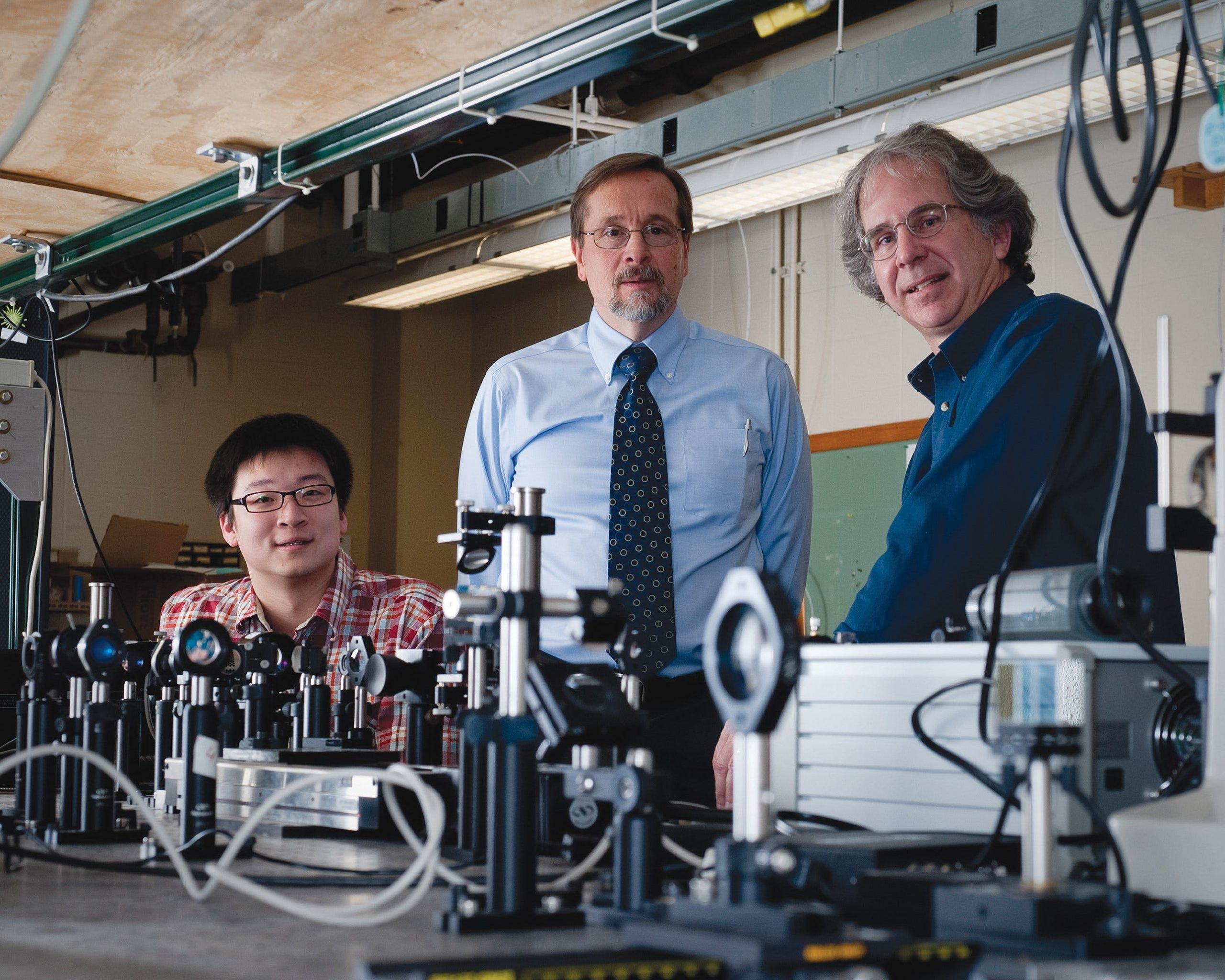Technology Aims to Find Best Chemo for Individual Patients
 Animated Dynamics co-founders are (from left): Purdue University Graduate Assistant Ran An
Animated Dynamics co-founders are (from left): Purdue University Graduate Assistant Ran An
Subscriber Benefit
As a subscriber you can listen to articles at work, in the car, or while you work out. Subscribe NowDr. David Nolte says it’s a harsh reality for cancer patients: more than half don’t respond to chemotherapy, and yet every patient suffers through its terrible side effects. As chief scientific officer of West Lafayette-based Animated Dynamics, Nolte says the company will soon be giving doctors newfound insight about which chemotherapies will actually work for which patients. With a recent $1.7 million boost in funding, the company plans to deliver clarity to cancer treatments in less than a year.
“The way that therapy is currently selected for cancer patients is almost a blind process. Because of that, most cancer patients don’t respond to their therapy,” says Nolte, who is also the Purdue University Edward M. Purcell distinguished professor of physics. “I think we can drastically improve the selection of cancer therapy, and I think that’s going to have a lot of benefit for a lot of people.”
Aptly named Animated Dynamics, the company’s technology animates the traditional view provided by a microscope. Rather than a static image, the startup has created camera-like hardware that allows it to view living tissue in motion.
Nolte says this biodynamic imaging is created by shining a light on living tissue. The reflection of light waves creates a 3D image that shows the real-time movement of living cells and structures inside them. While this type of imaging can be helpful in a long list of applications, the company believes helping cancer patients is the technology’s “sweet spot.”
“[The technology] picks up all the motion going on inside of cells and the cells themselves. We’re able to see how those motions are affected by an applied therapeutic,” says Nolte. “We’ll get multiple pieces of a patient’s biopsy, so we can test a lot of different chemotherapy [drugs] the doctor is considering. Then we can find which therapy is affecting the tissue in the right way—the one that’s going to be best for the patient.”
The startup originally planned on selling the hardware that makes such a view possible, but changed its business model to market the technology as an LDT, or Laboratory Developed Test. Doctors will obtain biopsies from a patient, put the tissues on a cold pack and ship them overnight to Animated Dynamics for testing.
Because the company will be looking at living tissue, it’s in the process of moving from West Lafayette to a location near the FedEx Express Hub at Indianapolis International Airport. Nolte says the technology will allow scientists to test biopsies and get results to doctors in about 48 hours.
Nolte believes the company’s strategy to commercialize the technology as an LDT, coupled with the recent closing of $1.7 million in Series A funding, will streamline the path to market.
“Until you close that Series A, you might have timelines, but there’s no way of knowing whether you can stick to them. We now have the funds we need to actually implement our game plan,” says Nolte.
“Because we’re developing this as an LDT…it won’t have the really long delays of getting through the FDA, so we can get to market very quickly.”
Animated Dynamics plans to have its service available to oncologists by the second quarter of 2017. Human pre-clinical trials are underway—some of which are in Indiana—involving several different types of cancer. Nolte says the startup is now focusing on building infrastructure “to handle the volume of patients we expect to have fairly shortly.” The company is on the doorstep of a Phase 1 clinical trial that will involve around 50 breast cancer patients.
“The technology itself is now fairly stable; it’s been developed over about 15 years at Purdue,” says Nolte. “All that know-how has transitioned over to the company. The breast cancer clinical trial is establishing all the protocols we’ll be using as we launch our fee-for-service business model.”
The company believes the path to market is now more certain than before—confident the technology will soon be converting a “blind process” for doctors into a knowledgeable selection of the best chemotherapy for their patients.
Nolte says closing the Series A funding solidifies its timeline for commercializing the technology.
Nolte likens the imaging technology to Doppler weather radar.

